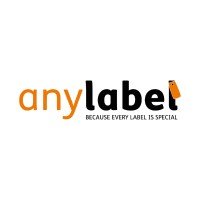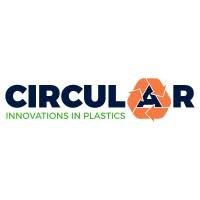
Horti Sustainable
Packaging Initiative
Horti Sustainable Packaging Initiative (HSPI)
The Horti Sustainable Packaging Initiative (HSPI), consists of thirteen packaging manufacturers and suppliers within the floriculture sector, who work together to make packaging materials used for flowers and plants more sustainable. By intensively working together, our goal is to accelerate the transition to more environmentally friendly packaging, and to actively contribute to the sustainable future of the floriculture sector and maintain a healthy living environment.
We want to actively contribute to the sustainable future of the floriculture sector and maintain a healthy living environment.
Cooperation
We view intensive cooperation within the packaging chain as the key to taking greater steps towards making the packaging of flowers and plants more sustainable. We have set out our cooperation, ambitions and objectives in a declaration of intent.
The signatories and cooperating partners of HSPI are Chrysal, DecoWraps, Modiform, Koen Pack, JBB Pack, Desch Plantpak FloraLife, Twinpack, Anylabel, Multi Supplies, Circular Plastics BV, Royal FloraHolland, Paardekooper Horti and Greenport Aalsmeer foundation. Greenport Aalsmeer, is an independent party which manages the program.














In connection with the market
The demand for sustainable packaging by consumers, governments, and our customers in the floriculture sector (growers and exporters) is increasing. The ambitions of the individual packaging companies affiliated with HSPI to work sustainably are also growing.
Our customers, led by the Dutch Flower Group, challenged us in 2023 to investigate how we could work cohesively to make packaging more sustainable. We enthusiastically took up that challenge with the establishment of the HSPI, and we will continue to seek connections with the entire floriculture chain, to achieve our objectives. Together we move forward!
Three aspects
Together we have set ourselves challenging objectives which anticipate future legislation and sector ambitions. These objectives were based on a feasibility study, which includes knowledge and expertise from various parties, from within and outside of the floriculture sector.
To realize our objectives, we are focusing on three aspects:
1. Supply chain transparency & certification
2. Circularity in materials and packaging
3. Carbon Footprint and life cycle assessments
In order to achieve the set goals, three working groups within the HSPI have been set up, each focusing on a different aspect. These working groups aim to gather information, develop set standards, and provide tools to the HSPI participants to help them meet the company goals:
Basket of standards: to simplify navigating the complex landscape of sustainability claims and certifications, HSPI has developed a ‘basket of standards’. Here you will find certificates that align with HSPI’s objectives, particularly in the areas of social responsibility and the procurement of wood and paper products. In addition, the overview contains certificates that support various sustainability claims, each with a demonstrable contribution to a more transparent and responsible packaging chain. The basket is dynamic in design. When new or improved certificates become available that better match our ambitions, they will be added. Do you have any questions or suggestions? Send an email to Herold@greenportaalsmeer.nl
Preparation for PPWR legislation and knowledge development about export countries: aTraffic Light Matrix (tool) has been developed to guide horticultural companies in navigating the changing landscape of packaging design, in line with the European Packaging and Packaging Waste Regulation (PPWR) and the expectations of increasingly environmentally conscious consumers. The Traffic Light Matrix is a clear and concise tool that supports conscious packaging choices. Inspired by the principles of RecyClass.eu, this matrix assesses different types of materials, including plastics and paper, based on current and future possibilities for collection, sorting and recycling. Each material is categorized via a simple traffic light system:
🟢 Green for optimal choices
🟠 Orange for considerations
🔴 Red for materials that contribute less to the circular economy.
Whether you want to improve the recyclability of your packaging, reduce the environmental impact or be prepared for new regulations: this matrix offers concrete and useful guidelines, based on practical knowledge from the sector. Want to know more? Send an email to Herold@greenportaalsmeer.nlEnvironmental footprint of packaging: packaging use is included in the footprint calculations according to the FloriPEFCR, which quantifies the environmental impact of flowers and plants in floriculture. HSPI wants to contribute to new insights that enable companies to reduce their ecological footprint. Calculating a CO2 footprint provides insights to reduce impact. This working group shares and develops knowledge and skills to properly work with footprint calculations within your own company in order to make the right choices for sustainability.
HSPI has drawn up objectives which anticipate future legislation and sector ambitions
Would you also like to contribute to our ambitions?
Do you develop and/or supply packaging to the floriculture sector and would you like to contribute to the realization of our sustainability ambitions? Then register with our initiative, we would be happy to discuss it with you.. Please contact Herold Dongelmans from Greenport Aalsmeer.


